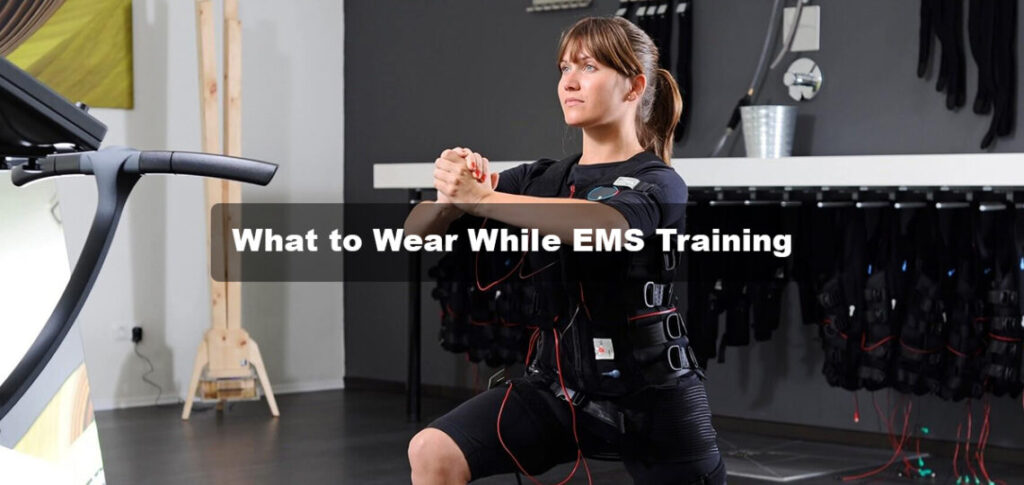-
Table of Contents
- What Type of Clothing to Wear During EMS Workout Training
- Introduction
- The Importance of Proper Clothing for EMS Training
- What to Look for in EMS Workout Clothing
- 1. Material
- 2. Fit
- 3. Design
- Examples of EMS Workout Clothing
- 1. EMS Training Suit
- 2. EMS Training Shorts and Leggings
- 3. EMS Training Shirts
- Conclusion
What Type of Clothing to Wear During EMS Workout Training
Introduction
Electrical Muscle Stimulation (EMS) has gained popularity in recent years as an effective way to enhance muscle strength and improve overall fitness. During an EMS workout, it is crucial to wear the right type of clothing to maximize the benefits and ensure comfort and safety. This article will explore the importance of appropriate clothing for EMS training and provide valuable insights on what to wear.
The Importance of Proper Clothing for EMS Training
When engaging in EMS training, the right clothing can significantly impact the effectiveness of the workout. Here are some reasons why proper clothing is essential:
- Electrode Placement: EMS training involves the use of electrodes that are placed on specific muscle groups. Proper clothing ensures that the electrodes adhere well to the skin, allowing for optimal muscle stimulation.
- Comfort: Wearing comfortable clothing during an EMS workout is crucial to ensure freedom of movement and prevent any distractions or discomfort that may hinder performance.
- Safety: Certain types of clothing can interfere with the electrical impulses generated by the EMS device. It is important to wear clothing that does not obstruct or interfere with the EMS technology to avoid any potential safety risks.
- Moisture Management: EMS workouts can be intense and result in sweating. Choosing clothing that effectively manages moisture can help keep the body dry and prevent skin irritation.
What to Look for in EMS Workout Clothing
When selecting clothing for EMS training, there are several key factors to consider:
1. Material
The material of the clothing plays a significant role in comfort and moisture management. Here are some materials that are suitable for EMS workouts:
- Moisture-Wicking Fabrics: Look for clothing made from materials such as polyester or nylon blends that have moisture-wicking properties. These fabrics draw sweat away from the body, keeping you dry and comfortable during the workout.
- Breathable Fabrics: Choose clothing that allows air circulation to prevent overheating. Fabrics like mesh or lightweight cotton blends are excellent choices for breathability.
- Stretchable Fabrics: Opt for clothing with stretchable materials like spandex or elastane. These fabrics provide flexibility and freedom of movement, allowing you to perform exercises without any restrictions.
2. Fit
The fit of the clothing is crucial for optimal performance during an EMS workout. Consider the following factors when choosing the right fit:
- Snug but not Restrictive: Clothing should fit snugly to ensure proper electrode placement and muscle stimulation. However, it should not be too tight to restrict movement or cause discomfort.
- Freedom of Movement: Look for clothing that allows a full range of motion. This is particularly important for exercises that involve stretching or dynamic movements.
- Length: Consider the length of the clothing, especially for shorts or leggings. It should be long enough to cover the electrodes and prevent any discomfort or irritation.
3. Design
While functionality is essential, the design of the clothing can also contribute to the overall experience. Consider the following design aspects:
- Flat Seams: Look for clothing with flat seams to minimize friction and prevent chafing during the workout.
- Compression: Some EMS workout clothing incorporates compression technology, which can enhance blood circulation and muscle support.
- Style: Choose clothing that makes you feel confident and motivated. When you feel good in your workout attire, it can positively impact your performance.
Examples of EMS Workout Clothing
Now that we understand the importance of proper clothing for EMS training, let’s explore some examples of clothing specifically designed for EMS workouts:
1. EMS Training Suit
An EMS training suit is a one-piece garment that covers the entire body. It is made from stretchable and moisture-wicking materials, ensuring optimal electrode placement and comfort. The suit is designed to provide full-body muscle stimulation and is suitable for both men and women.
2. EMS Training Shorts and Leggings
EMS training shorts and leggings are specifically designed to accommodate electrode placement on the lower body. They are made from moisture-wicking and stretchable fabrics, allowing for unrestricted movement during exercises. These garments provide targeted muscle stimulation for the legs and glutes.
3. EMS Training Shirts
EMS training shirts are typically made from moisture-wicking materials and have strategically placed electrodes on the chest and back areas. These shirts provide targeted muscle stimulation for the upper body while ensuring comfort and freedom of movement.
Conclusion
Choosing the right clothing for EMS workout training is crucial for maximizing the benefits of the workout and ensuring comfort and safety. The material, fit, and design of the clothing play significant roles in electrode placement, comfort, and overall performance. By selecting clothing made from moisture-wicking and breathable fabrics, with a snug but not restrictive fit, and incorporating design elements such as flat seams and compression technology, you can enhance your EMS training experience. Remember, feeling good in your workout attire can positively impact your performance, so choose clothing that makes you feel confident and motivated. With the right clothing, you can optimize your EMS workout and achieve your fitness goals.




